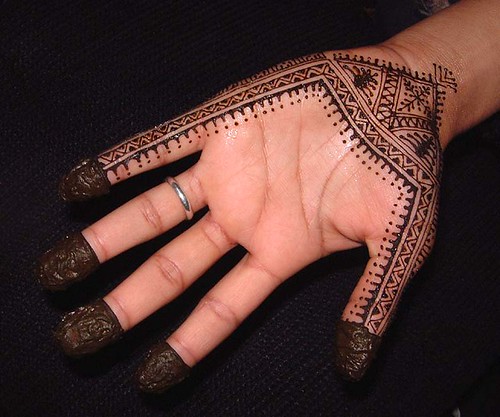Bridal Mehandi Designs Videos (1)Biogarphy Photos Pictures Pics Images
Sorce(Google.com.pk)
Mehndi is the art of henna painting on the body and it has been practiced in different countries like India, Africa, and the Middle East, where the henna plant is believed to bring love and good fortune, and to protect against evil. Mehndi is traditionally practiced for wedding ceremonies, during important rites of passage, and in times of joyous celebration.
Mehndi is widely accepted as a form of spiritual celebration and worship as well as common cosmetic. Oppi Untract, an author and expert on ethnic Indian adornment, states, “by adorning the visible, material body, women also seek to satisfy a universal longing for the embellishment of its intangible counterpart, the human spirit.1” A woman’s first application of mehndi is around the time of her first menstruation. It transforms her from a virgin child to a seductress—this is when she is taught the “arts of love,” and begins to prepare herself for marriage.2 Mehndi is listed in the Kama Sutra as one of the 64 arts for women.
Mehndi paste is made from the crushed leaves of the henna plant is applied to the skin, and when removed several hours later,
leaves beautiful markings on the skin that fade naturally over 1 to 3 weeks. Besides being the key ingredient in mehndi, henna has also been used to dye the manes and hooves of horses, and to color wool, silk, and animal skins, as well as men's beards. Studies of mummies dating back to 1200 BC show that henna was used on the hair and nails of the pharaohs.
As far back as 1200 B.C. the ancient Egyptians were using henna on their nails and hair. Henna was also used to dye animal skins, textiles, and men's beards. It was many hundreds of years ago when the application of henna to a woman’s hands and feet first assumed the form of an intricate ritual. Henna is a good omen to be used during auspicious occasions such as weddings and religious festivals, births and naming ceremonies, circumcisions, birthdays and holidays.
Once the henna plant's cooling properties were discovered, painting the skin became a way for the desert people of India to cool down their body temperatures. Until the art of mehndi became hot news in 1996, henna was mostly used in the United States as a hair dye. Widely recognized now as a wonderful way to dye the skin and to achieve the look of a tattoo, traditional henna uses and application processes have gone contemporary.
The artist covers the bride’s hands and feet with flowers, curly arabesques, paisleys, mangos and vines. The lotus flower, a frequently used mehndi design, is an important symbol of purity in Hinduism and Buddhism. The peacock, the national bird of India, is another traditional Indian motif. The groom’s initials will often be hidden in the design. It is believed that if he is unable to find them, the bride will be the dominant force in the marriage. Indian women believe that the darker the color of the henna stain, the deeper the mother-in-law’s love for the new bride will be. The new bride will not have to perform any household chores before the design has disappeared. One old wives’ tale describes a cunning young girl who secretly reapplied the henna each night so her stain never wore off.
Bridal Mehandi Designs Videos (1) Photos Pictures Pics Images
Bridal Mehandi Designs Videos (1) Photos Pictures Pics Images
Bridal Mehandi Designs Videos (1) Photos Pictures Pics Images
Bridal Mehandi Designs Videos (1) Photos Pictures Pics Images
Bridal Mehandi Designs Videos (1) Photos Pictures Pics Images
Bridal Mehandi Designs Videos (1) Photos Pictures Pics Images
Bridal Mehandi Designs Videos (1) Photos Pictures Pics Images
Bridal Mehandi Designs Videos (1) Photos Pictures Pics Images








No comments:
Post a Comment